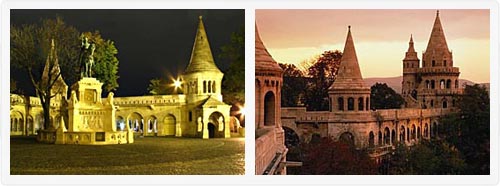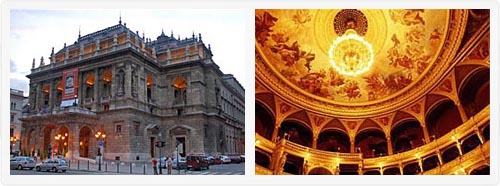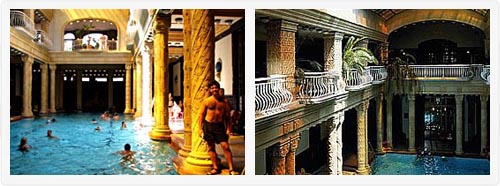The Castle
Buda Castle (Hungarian: Budavári Palota) is the historical castle and palace complex of the Hungarian kings in Budapest, first completed in 1265. In the past, it was also called Royal Palace and Royal Castle. Buda Castle was built on the southern tip of Castle Hill, bounded on the north by what is known as the Castle District (Várnegyed), famous for its Medieval, Baroque and 19th century houses, churches and public buildings. It is linked to Clark Ádám Square and the Széchenyi Chain Bridge by the Castle Hill Funicular. The castle is part of the Budapest World Heritage Site, declared in 1987.
The Halászbástya or Fisherman's Bastion is a terrace in neo-Gothic and neo-Romanesque style situated on the Buda bank of the Danube, on the Castle hill in Budapest, around Matthias Church. It was designed and built between 1895 and 1902 on the plans of Frigyes Schulek. Between 1947–48, the son of Frigyes Schulek, János Schulek, conducted the other restoration project after its near destruction during World War II. From the towers and the terrace a panoramic view exists of Danube, Margaret Island, Pest to the east and the Gellért Hill. Its seven towers represent the seven Magyar tribes that settled in the Carpathian Basin in 896. The Bastion takes its name from the guild of fishermen that was responsible for defending this stretch of the city walls in the Middle Ages. It is a viewing terrace, with many stairs and walking paths.

The Opera House
Budapest Opera House will enchant you not only with its ballet and opera performances but with its fine neo-Renaissance architecture. The building fits well in with the similary elegant neighbourhood on Andrássy Avenue. Hungary's greatest Historicist architect, Miklós Ybl designed the building for the Millennium celebrations in 19th century. Construction started in 1875 and the building was finished in 1884. Ybl oversaw the work himself with painstaking care. The building cost a lot of money, the auditorium was decorated with more than 7 kgs of gold. Hundreds of statues and paintings decorate the Budapest Opera House both inside and out. Emperor Franz Joseph financed the construction, though he received little recognition for his generosity. He in turn didn't appreciated the architect's work on the opening ceremony: "It's very beautiful. I like it very much." was all he said about Europe's most magnificent and modern opera house.

The Budapest City Park
The City Park (Városliget in Hungarian) is packed with things to do and places to see. The park was the main venue of the millennium celebrations in 1896. Behind Heroes' Square lies the ice-skating rink which is a lake in the summer with boats for rent. Since 1996, the ice-skating rink gives home to speed-skating championships. Along Állatkerti körút (Zoo Boulevard), to the left from Heroes' Square, the first building is the Gundel Restaurant, built in 1894 (until 1910, it was called Wampetics Restaurant). Gundel Károly has taken over in 1910, and turned it into the best place for fine dining in Budapest. Next to the Gundel is the ornate Art Nouveau entrance to the Budapest Zoo, which opened in 1866. Walking past the Zoo walls, the domes and towers of the Széchenyi Thermal Bath come into view; the bathhouse is one of the largest bath complexes in Europe. The thermal spring underneath it was discovered in 1879. Across from the bath is the Municipal Circus, where the first performance was held in 1891 - since then, 125 shows were held, with 15500 performances and over 25 million viewers. Next to the Circus is the Amusement Park, which in today's form has been operational since the 1950's.The Vajdahunyad Castle, originally built of cardboard and wood for the 1896 World Expo, was rebuilt from stone at the end of the expo. It is a copy of three other buildings from the Hungarian countryside, showcasing Hungary's predominant architectural styles.
Baths
Budapest is also called the capital of baths and spas because of its many natural water sources and the amount of baths which the Turks brought to Hungary around 1550. Over the years the Budapest bathing culture became bigger and bigger and up to date it is one of the top addresses in Europe for spa or bath holidays due to its more than 1000 natural water springs. Many of the baths in Budapest are very old such as the Szechenyi bath or the Gellert bath which are not only interesting because of the water and pools but also architectural they are very beautiful and often used as a background for touristic pictures and are some of the main sights for every visitor.











